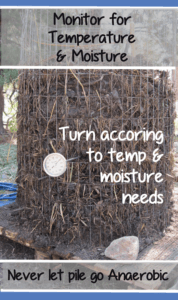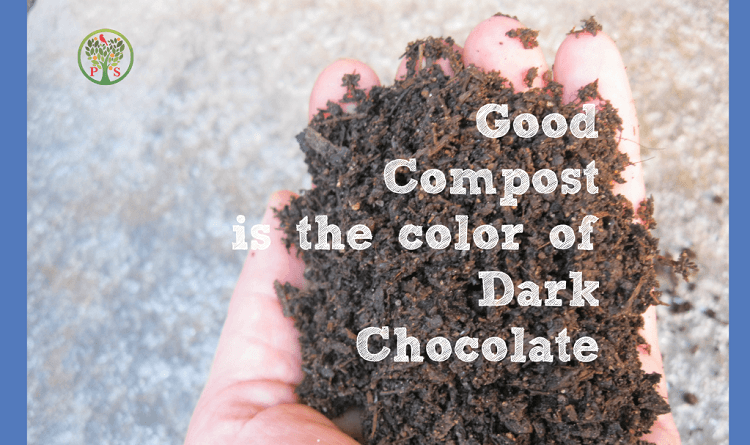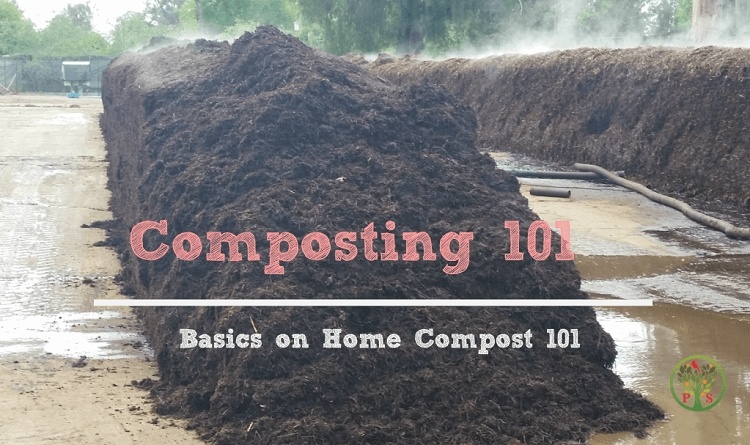Composting 101
If you are at the Composting 101 level there are few basics that you will need for home composting 101. You will quickly want to graduate and learn the tips and tricks to making the best backyard compost for your plants.
What is Compost?
Compost is simply the decomposition of organic material. It’s the composting microbes that break down the organic material into a form that will supercharge your plants. It’s made up of any kind of organic material, but compost is best made using formulas that are best suited for the type of plant you are trying to grow.
Want compost for your shrubs and trees?
Any permanent vegetation – blueberry shrubs, fruit trees and any plant that is woody like compost that has more browns than greens. This is because leaf compost or other compost made with woody or “brown” materials foster the growth of fungi. It’s the soil fungi that makes woody plants really happy.
Want compost for your lawn and vegetable garden?
Lawns, most vegetables as well as grains such as corn and wheat like a compost recipe that is a balance between the greens and browns. That is because using both types of materials will make compost with a balanced bacteria to fungi ratio.
So compost should be made using the right ratios of green vs brown materials.
Best Compost Uses – Composting 101
The benefits of compost include adding rich organic matter to the soil which provide a slow release nutrient source for your garden. If you are just as composting 101 you should read this article on the benefits of compost since it goes well beyond just a nutrient source for your garden. Learn about how it can break down harmful chemicals, make nutrients more available, hold on to water and more!.
Compost can be used as seed starters, in your garden, in planters, on your lawn, and around your shrubs and trees. You can’t add too much!
The benefits of compost can be extracted too into liquid form, called compost tea. It doesn’t provide the organic matter, but does extract all the beneficial microbes off the surface of the compost and applies it in liquid form to plant surfaces and soil. Think of it as Probiotics for Plants. It’s increasingly used in organic farms, on orchards and in habitat restoration projects.
Composting 101 – Compost Methods
Composting 101 is divided into two main camps: hot composting and static composting.
Hot Composting
Let’s start with hot composting as a composting 101 topic:
Hot composting is simply the best method for making high quality compost. But it involves some work. You build the compost pile all at one time, monitor and turn it for about 15-20 days and at the end of the process you have some amazing compost for your garden. So it’s so much faster than the static compost method.
In addition, it kills any weed seeds and potential diseases and pathogens that may be in the compost materials you add. You have to be prepared however to do a bit of work to get the great results. Most professional composting operations rely on this technique to make their compost.
Static Compost Pile
Static composting is very common because it requires less work, but has inherent problems. The biggest composting 101 problem is that it doesn’t kill all the weeds and potential diseases. So the compost you add to the garden may be just adding additional weeds and even potential plant disease that can cause problems. The other composting 101 problem with a static compost pile is that when you add new material to the top, then want to get your compost, the “finished” compost is at the bottom. Hard to get to. It also takes up to 2 years to get the finished product. Who wants to wait for that??
Compost Bins, Heaps and Tumblers
Compost Heap– Composting 101
Backyard composting 101 includes deciding what to make your compost pile in. Those that don’t mind a bit of messiness will just put the pile in a heap, and not use a compost bin. Maybe you have a lot of space, but if you don’t then a compost bin is a better bet.
Compost Bin – Composting 101
The 101 on composting includes deciding what type of compost bin to use. A DIY compost bin can include using a simple wire cage (my favorite), a palette based compost bin – sometimes having multiple chambers to turn the compost into the next chamber, and ones for purchase.
At a minimum the compost bin should be 3 x 3 feet in order for decomposition to take place, but bigger is better. If you are home composting through the winter and you live in a cold climate the 3 x 3 feet will not do the trick since the thermal mass is not large enough. If you live in a warm place like Florida or Arizona 3 x 3 will get you through the winter.
What to Compost?
You can compost practically any material that is organically based. Some will decompose better than others. Follow this composting 101 tips to learn some dos and don’ts of what to compost.
Here’s a few basics on how to compost. Materials are divided into two main types, and depend upon their Carbon to Nitrogen Ratio. Narrow C:N Ratio materials heat up the pile and keep the pile hot, enabling for faster decomposition. The composting bacteria is responsible for that. Think of these materials as the “green”, or more technically speaking “high nitrogen” and “nitrogen” materials. This includes fruits, vegetables, grass clipping, and hedge clippings. Materials that are harvested while living but lack woody materials.
Materials that are harder to decompose such as wood chips, leaves for compost and straw have a wider C:N ratio. These are considered the “browns”. The composting fungi are responsible for their decomposition, which makes great compost for shrubs and trees.
Composting 101 – Maintaining the Compost Pile
Once you build your compost pile, the composting microorganisms require moisture to be doing their job. Composting 101 includes maintain the compost pile moisture, but at the same time  making sure it it not too wet.
making sure it it not too wet.
Backyard composting 101 also includes maintaining adequate oxygen in the compost pile. Without oxygen the beneficial composting microbes will shut down and all you will get is the microbes that cause diseases. So you will need to aerate the pile. This is generally done based upon temperature. You will need a composting thermometer to monitor. Compost should be at least 131 degrees for the microbes to do their thing.
How to Tell If the Compost Is Ready?
You can tell when compost is ready when, in a hot compost pile, the temperature has come back to outside air temperature. The pile should be turned at least 3 times to ensure that all material is thermally heated to kill the weed seeds and potential plant diseases. If you haven’t turned it three times and the compost pile temperature goes to ambient air temperatures, then you will not have treated all the material. Simply add more high nitrogen (green) materials and get the pile going again. Check out this an other composting tips.
Composting 101 mistake includes adding the compost before it is finished. If it is still hot in temperature don’t use the compost since it will suck the nitrogen out of the soil, leaving your plants nitrogen deficient and can kill your plants entirely.

Finished compost should be dark chocolate in color and smell earthy. If it stinks it has gone anaerobic and it may not be good for the garden. Backyard composting 101 includes an option of sifting the final materials in the compost pile. There may still be twigs and other materials not fully decomposed that you don’t want in the garden.
Composting 101 – Applying Compost
The 101 on composting including knowing when to apply compost. For gardens and large agricultural operations, compost should be applied in the fall, after the harvest. Compost can be applied directly to the surface. No need to till it in, since tilling can cause damage to the soil and promote more weed growth.
For shrubs and trees, compost is best applied also in the fall, but as a secondary option it can be applied in early spring.
For planters apply the compost when you are seeding or putting in your container plants. Seed starting should use an ample portion of compost for optimum plant growth.



